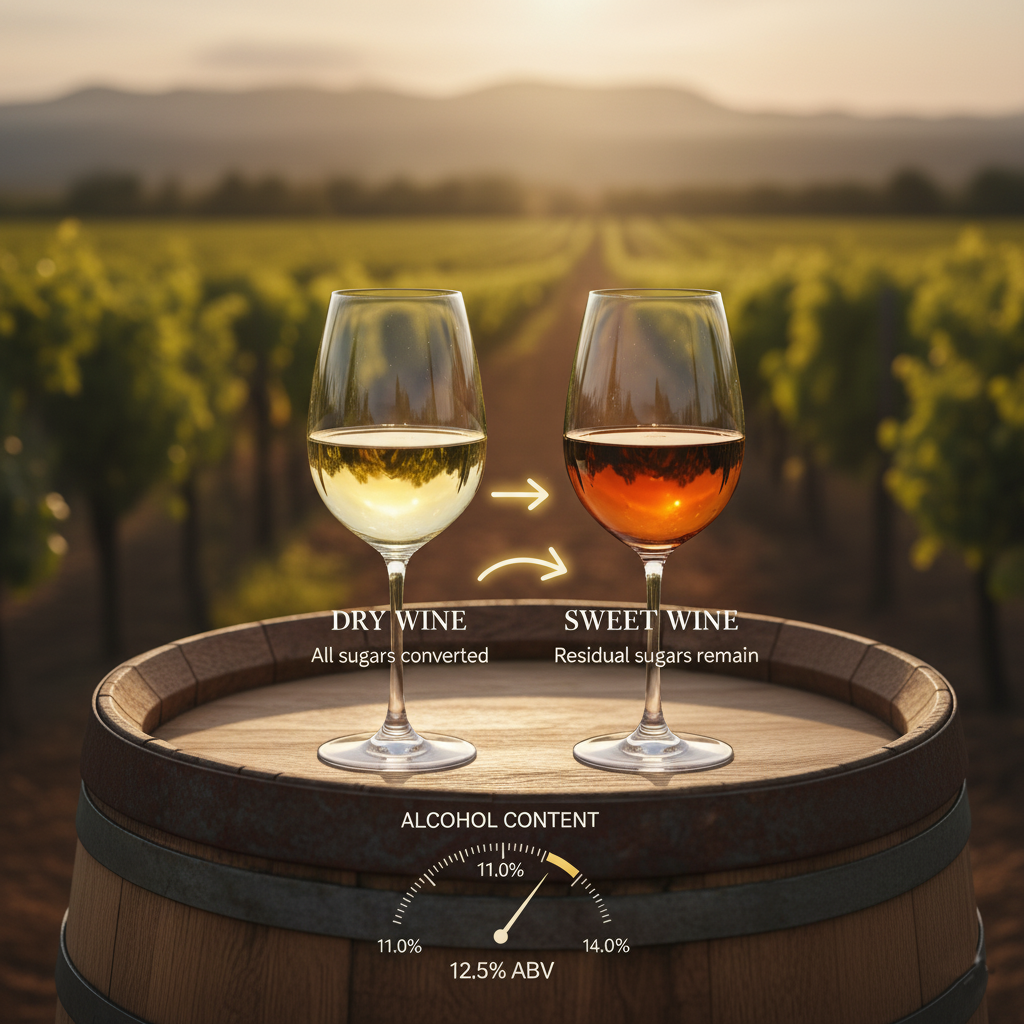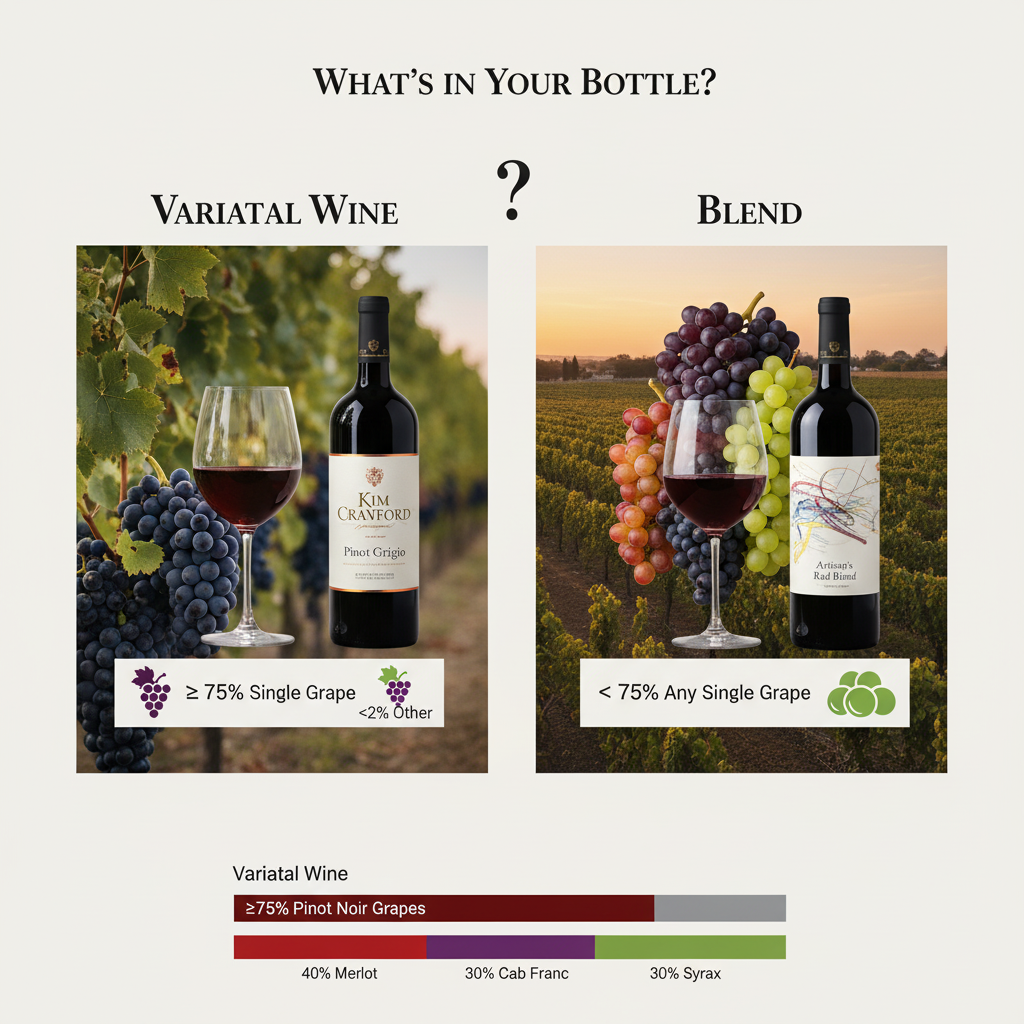Wine 101: Understanding Wine From Grape to Glass
Welcome to Wine 101!
Whether you're a curious beginner or looking to deepen your appreciation, this guide covers the essential knowledge you need to confidently explore the world of wine. We'll demystify what wine truly is, how it's made, and what factors contribute to its diverse flavours and price points. Our goal is to empower you to select the perfect bottle for any occasion and understand its value.
The Magic of Fermentation
At its heart, wine is a simple yet magical transformation. It's the fermentation of ripe grapes, where naturally occurring yeast (either on the grape skins or added by the winemaker) converts the grape's natural sugars into alcohol and carbon dioxide.
Sweet vs. Dry: The sweetness of a wine depends on when the fermentation process is stopped.
Dry Wine: Occurs when all the natural sugars are converted into alcohol.
Sweet Wine: Achieved by halting fermentation while some residual (unfermented) sugars remain, resulting in a sweeter taste; the more unfermented sugar, the sweeter the wine.
Alcohol Content: Most wines settle between 11.0% and 14.0% Alcohol by Volume (ABV), with 12.5% being a common target.
The Wine Experience:
Storing Your Wine - Key Tips
Proper storage helps protect your wine and allows it to age gracefully.
Short-Term Chilling: If you chill wine in the refrigerator, it's best to consume it within 1 to 2 weeks. Prolonged refrigeration can dry out the cork, potentially leading to premature oxidation.
Temperature Stability: Once a wine has been chilled, it should ideally remain chilled. Fluctuations between cold and room temperature can negatively impact the wine's quality. For longer-term storage of fine wines, consistent, cool, dark conditions are always recommended.
Serving Wine - Ensuring the Best Experience
Serving wine at its optimal temperature is key to unlocking its full flavour profile and ensuring an enjoyable experience.
"Room Temperature" Revisited: The old adage of "room temperature" for red wine originates from an era before central heating. Today, a modern room is often too warm.
Red Wines:
Lighter Reds: Best served slightly chilled, between 14.5-16.7º C (58-62º F).
Fuller Reds: Benefit from a slightly warmer temperature, between 16.7-18.3º C (62-65º F).
White Wines: Chilling white wine enhances its refreshing qualities, highlights fruity flavours, and makes its natural acidity more pronounced.
Lighter Whites: Ideal at 8.3-11.1º C (47-52º F).
Fuller Whites: Best between 11.1-12.8º C (52-55º F).
Important: Avoid over-chilling, as it can mute delicate aromas and flavours.
Sparkling Wines & Champagne: Enjoy these effervescent delights well-chilled, between 7.7-9.0º C (46-48º F), for maximum crispness and sparkle.
Justifying Pricier Wines
The difference between a $9 bottle and a $90 bottle often comes down to a combination of artistry, rarity, and meticulous attention to detail.
Terroir (Location & Land): The most critical factor. Exceptional grapes come from extraordinary vineyards. Elements like soil quality, drainage, elevation, sun exposure, and microclimate (collectively known as "terroir") are unique to specific, often limited, geographic locations. Great vineyards are a finite resource.
Grape Quality: Superior terroir, combined with expert viticulture (grape growing), yields grapes of unparalleled quality. These grapes have a higher cost to cultivate and harvest.
Winemaking Skill & Investment:
Aging: Many fine wines are aged in small, new oak barrels. These barrels are expensive, and the aging process itself takes time and cellar space, adding complexity and desirable notes (vanilla, spice, toast) to the wine.
Process Control: Expertise in every step, from fermentation to blending, ensures consistency and quality.
Limited Production: Often, higher-end wines are made in smaller batches to ensure quality control, creating scarcity.
Supply and Demand: Ultimately, the reputation of a vineyard, the quality of its grapes, and the demand for its limited production drive the price of fine wines, much like any other luxury good.
Vintage Years - Age Like Fine Wine
The vintage year on a wine label is more than just a date; it's a testament to the conditions of a specific harvest.
Harvest Year: The vintage year indicates when the grapes used to make that particular wine were harvested.
"Good Vintage": This term refers to a year where all the variables — weather, temperature, rainfall, and grape maturity — aligned perfectly to produce grapes of exceptional quality, leading to a potentially outstanding wine. Knowing the good vintage years for a particular region can guide your selection.
Understanding Wine Categories
Wines are broadly categorized based on their style and characteristics:
Table Wine: This is the most common category, encompassing still white, red, and rosé wines with an alcohol content typically below 14% ABV. These are your everyday, versatile wines.
Fortified & Dessert Wine: These wines are made by adding a neutral grape spirit (like brandy) to a fermenting wine. This process increases both the alcohol content and the sweetness. Examples include Ports and Sherries, which are often enjoyed after a meal. Late-harvest wines, made from over-ripe grapes with concentrated sugars, also fall into the sweet category, though they achieve their sweetness naturally.
Sparkling Wine: Known for their delightful effervescence, sparkling wines contain carbon dioxide. This fizziness is typically a result of a second fermentation.
"Bubbly" Wines: Most sparkling wines (like Prosecco or Asti) undergo this second fermentation in large, sealed tanks.
Champagne: A specific type of sparkling wine that must be produced and bottled in the Champagne region of France. Its second fermentation traditionally occurs directly in the individual bottle, contributing to its distinct character.
What is Wine, Really?
The Spectrum of Color: How Wine Gets Its Hue
Surprisingly, the juice inside most grapes is clear. A wine's color primarily comes from contact with the grape skins during fermentation.
Red Wine: Achieves its vibrant colour when the grape juices are fermented directly with the dark skins. The pigments from the skins leach into the wine, giving it its characteristic red hue.
White Wine: Made by fermenting the juice without any contact with the grape skins. The skins are removed shortly after the grapes are crushed, resulting in a clear or golden wine.
Rosé Wine: A beautiful intermediary. Rosé is produced by allowing the juice to ferment with the grape skins for only a short period (just a few hours to a couple of days). Once the desired pink shade is achieved, the skins are separated, and fermentation continues without them.
Tannin: Structure Behind Red Wine
Tannin is a fascinating organic compound that plays a significant role in the taste and aging potential of wine.
-
Tannin is an organic acid primarily derived from grape skins and seeds. It's responsible for the sensation of astringency; that dry, sometimes bitter, puckering feeling you get, especially with red wines.
-
It's more prevalent in red wines because the juice ferments with the grape skins, allowing more tannin to be extracted. White wines contain very little tannin.
-
You can taste and feel tannin along your gum line, inside your cheeks, and sometimes on the roof of your mouth. It gives red wine its "chewy" or "dusty" quality.
-
Tannins are crucial for a wine's ability to age. As wine matures, tannins (along with other substances) slowly settle as sediment, contributing to the wine's evolving complexity and softening its texture over time.
Images are for illustrative purposes only and are not representative of any product.
Varietal Wines vs. Blends: What's in Your Bottle?
The label on your wine bottle tells a story about its composition:
Varietal Wines: These wines are named after their predominant grape type. To be labelled as a varietal, the wine must contain at least 75% of the grape variety stated on the label (e.g., a "Kim Crawford Pinot Grigio" must be at least 75% Pinot Grigio grapes).
Blends: Red or white blends contain less than 75% of any single grape type. Instead, they are crafted from a harmonious mix of several different grape varieties, allowing winemakers to create unique flavour profiles and complexities.






